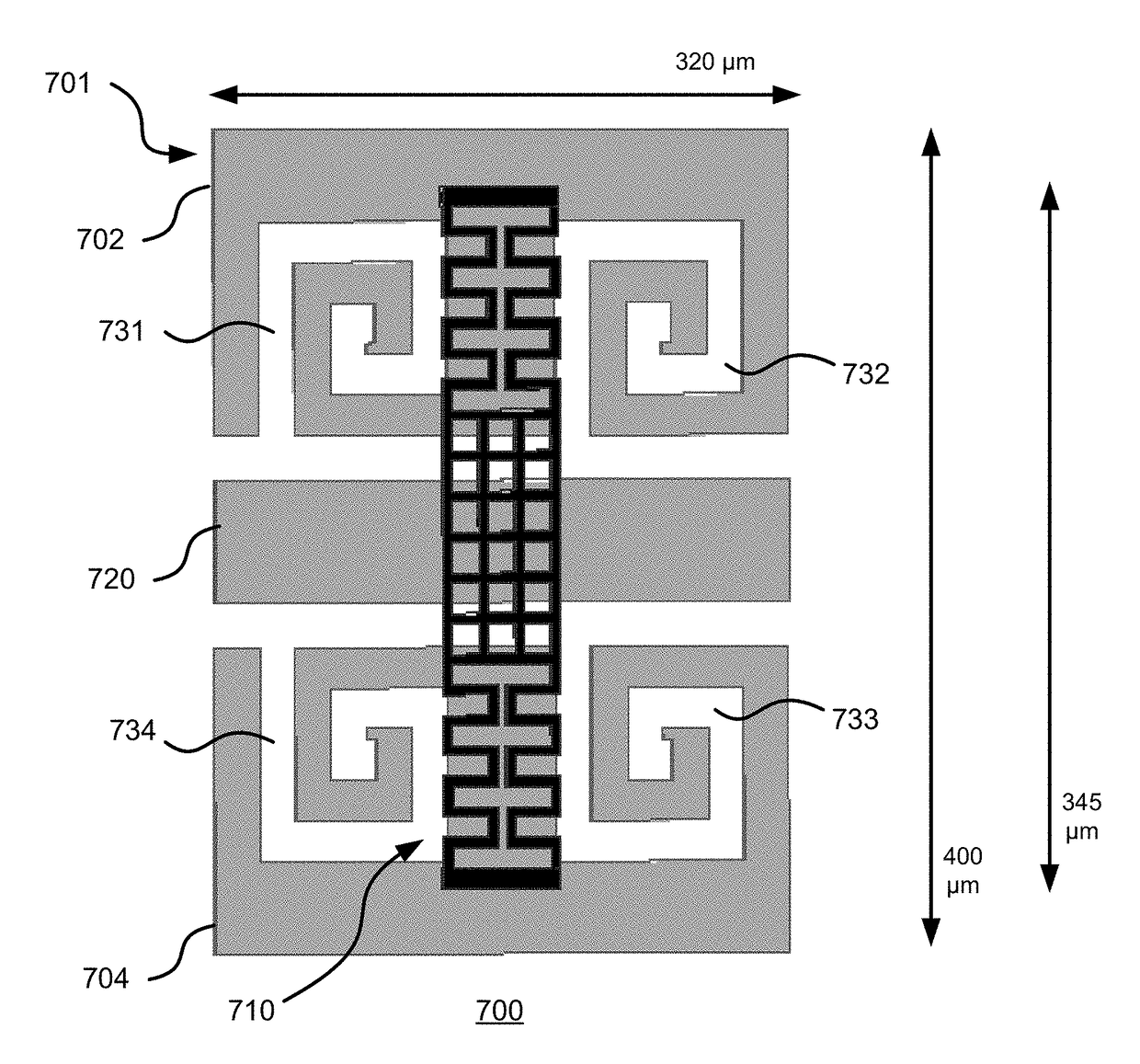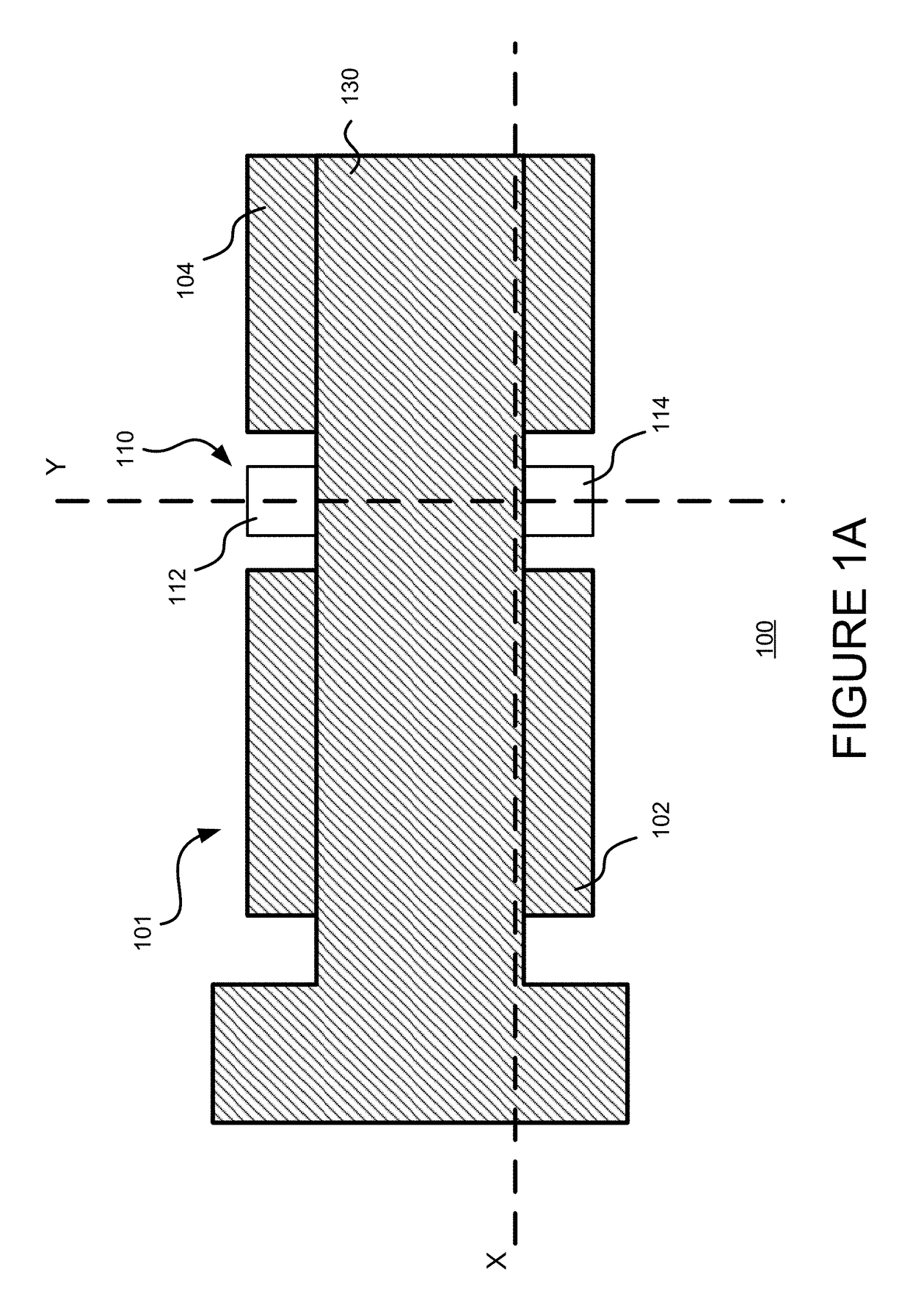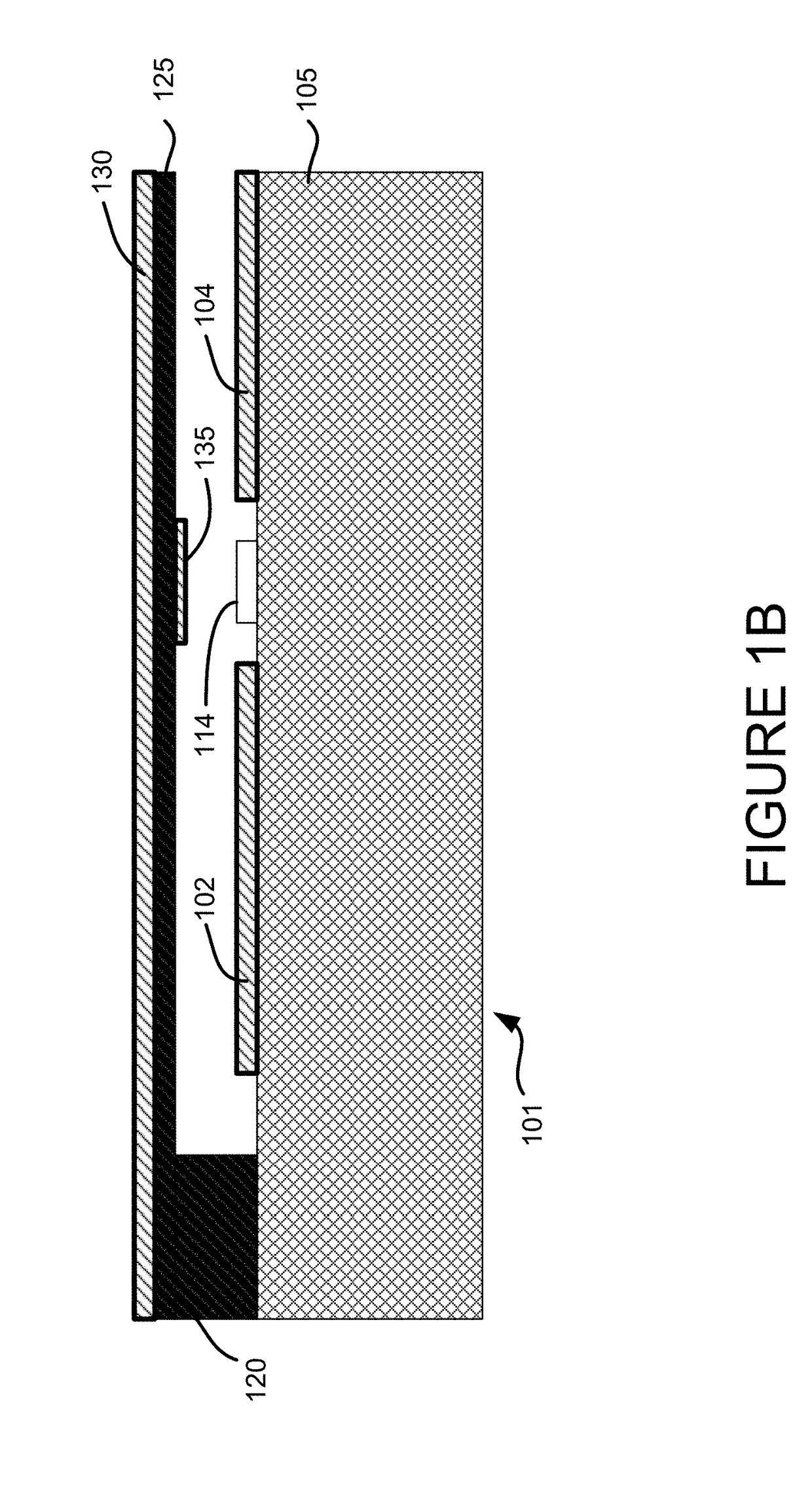Microelectromechanical switch with metamaterial contacts
a micro-electromechanical switch and contact technology, applied in contact devices, waveguide devices, electrical apparatus, etc., can solve the problems of high actuation voltage, high insertion loss, and high actuation voltage of rf mems switches, and achieve the effect of increasing the flexibility of primary deflectable beams and increasing the flexibility of secondary deflectable beams
- Summary
- Abstract
- Description
- Claims
- Application Information
AI Technical Summary
Benefits of technology
Problems solved by technology
Method used
Image
Examples
Embodiment Construction
[0076]The present disclosure provides for RF MEMS switches having improved signal characteristics and reduced vulnerability to stiction.
[0077]FIG. 2 shows an RF shunt switch 200 with a doubly-supported cantilever beam 210 formed above a coplanar waveguide formed on a substrate 201. A first end 212 and second end 214 of the beam 210 are supported by respective ground planes 202 and 204 formed in the coplanar waveguide. The middle of the beam 210 is suspended over a signal line 220 formed in the coplanar waveguide. The beam 210 is connected to an actuator (not shown) configured to apply a direct current (DC) bias voltage across the beam 210 the ground planes 202, 204. The DC bias voltage causes the beam 210 to deflect downward.
[0078]In the example of FIG. 2, the signal line 220 includes a conductive layer 222 covered by a thin dielectric layer 224, such as silicon nitride. The dielectric layer may be about 0.2 μm thick. When the beam 210 deflects downward and contacts the signal line ...
PUM
 Login to View More
Login to View More Abstract
Description
Claims
Application Information
 Login to View More
Login to View More - R&D
- Intellectual Property
- Life Sciences
- Materials
- Tech Scout
- Unparalleled Data Quality
- Higher Quality Content
- 60% Fewer Hallucinations
Browse by: Latest US Patents, China's latest patents, Technical Efficacy Thesaurus, Application Domain, Technology Topic, Popular Technical Reports.
© 2025 PatSnap. All rights reserved.Legal|Privacy policy|Modern Slavery Act Transparency Statement|Sitemap|About US| Contact US: help@patsnap.com



